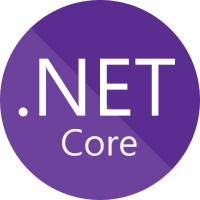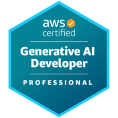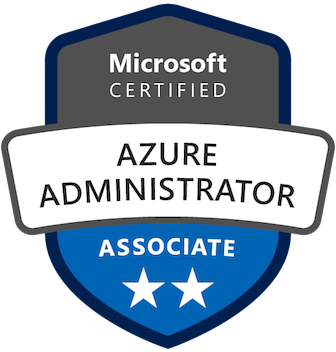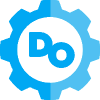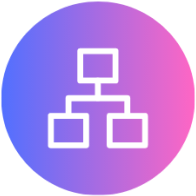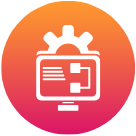ScholarHat Live Training
Programs to Land High-Paying Tech Jobs
What is ScholarHat?
Master In-Demand Skills. Get Certified
Advance your career with ScholarHat’s hands-on, certification-ready training in .NET, Java, Cloud, DevOps, and more—trusted by 20,000+ learners across the globe.
.NET Microservices Certification Training
.NET Software Architecture and Design Training
Azure AI Engineer Certification Training
Azure AI Engineer Certification Training
No courses found
Try adjusting your search criteria or browse all courses
Learn to Build Real-World Projects
Hands-on, work experience based learning is what makes ScholarHat different from others. Build real world projects by applying your coding skills live with your mentors in just 15 weeks. You'll learn how to start a project from scratch by following recommended architecture, practices and deploy to server.
ScholarHat Live Training Benefits
Discover the advantages of learning with ScholarHat and accelerate your career growth
Instructor-led Live Sessions
Live Training Membership gives you access to your subscribed live training and sessions recording from anywhere, and using any device staying at home.
Expert-led Live Sessions
All sessions are led by our expert mentors who are well connected to the open source communities. They explain complex technical concepts in an easy way.
Quick Notes
Boost your learning confidence with bite-sized notes. Quick notes are bite-sized chunks, to retain crucial knowledge and aid in efficient learning and quick recall.
Hands-on Labs
Learn by doing hands-on to gain confidence to solve real-world challenges and assignments.
Skill Tests
Each Module will be followed by mockup tests and quizzes which help you to monitor your learning progress and evaluate yourself.
Build Real-Projects
All the sessions are delivered using real-life examples. You will learn how to build real projects using industry recommended principles & practices.
Career Coaching
Get career guidance from top experts as your personal coach, align your preparation strategy & learning resources to achieve your goal.
Interview Preparation
Our priority is to prepare you for next job opportunity. We provide comprehensive explanations of each topic, using interview Q&A.
Mock Interviews
Practice mock interviews with experts working in the industry, before facing your job interview.
Discord Support Access
Get access to Discord community to discuss doubts, access assignments and learning with peer interaction.
Resume Building
Optimize your resume with the help of our experienced experts to get your desired jobs.
Get Certified
Master in-demand job skills to become a technology expert, get certified, and accelerate your career.
Unlock Your Coding Potential – Get Free Personalized Career Advice!
Your learning is important. Let's have a Google Meet to get more clarity.
Personalized Learning Path
Get a customized roadmap based on your experience level and career goals to maximize your learning efficiency.
Flexible Scheduling
Book your consultation at a time that works best for you with our flexible scheduling system.
Expert Career Guidance
Connect with industry experts who will provide valuable insights and career advice tailored to your goals.
I am a software engineer with 3 years of experience in IT. I enrolled in a Full Stack Development course and found it to be a truly valuable learning experience. The course was well-structured, combining theory with practical hands-on labs, real-time project building, quizzes, and interview Q&A sessions. These components not only strengthened my technical skills but also boosted my confidence for job interviews. The projects gave me a deeper understanding of end-to-end application development, and the overall guidance helped me stay consistent in my learning. I would definitely recommend this course to anyone looking to gain practical, job-ready skills in full-stack development.

Trupti Nawadkar
Software Engineer
The .NET Full Stack training was excellent and very job-oriented. The teaching was clear, practical, and easy to follow. It covered all the key concepts needed for real-world projects. I would definitely recommend it to others looking to build a career in full-stack development. I got selected, and guess what, I got 30% hike in my next company, LTIMindtree.

Kiran Nanaware
.Net Core fullstack Engineer
ScholarHat is a highly professional platform to learn modern technology. The courses are well-structured, easy to follow, and taught by experienced instructors. The quality of the training is excellent, with concepts explained clearly and supported by practical examples. The content is highly relevant to current industry requirements and effective in building both foundational and advanced skills. Whether you're a beginner or looking to upgrade your skills, ScholarHat provides the right environment to grow with practical knowledge and real-world projects. Highly recommended for anyone serious about tech learning!
Before joining the Scholarhat,i was wander what to do, all i groom just because of Scholarhat staff, he gave me good suggestion on personal level and professional level as well, comes on teaching his great knowledge and experience give me good job as well as right way to write a code. Shailender sir gives some really simple examples to explain the complicated scenario with projects, you are excellent and motivating people to enjoy the class.
I have completed my AngularJS training from Scholarhat. There is No doubt Scholarhat is completely different compare to others, first time in my carrier I have received such kind of training and support. They have really awesome instructors and support persons are technically sound and I would like to appreciate their 24 x 7 support. I never seen such kind of support by other companies in India till now. As per my experience Scholarhat is the BEST provide e-learning courses for all software programs including latest technologies. Thanks #DNT Staff

